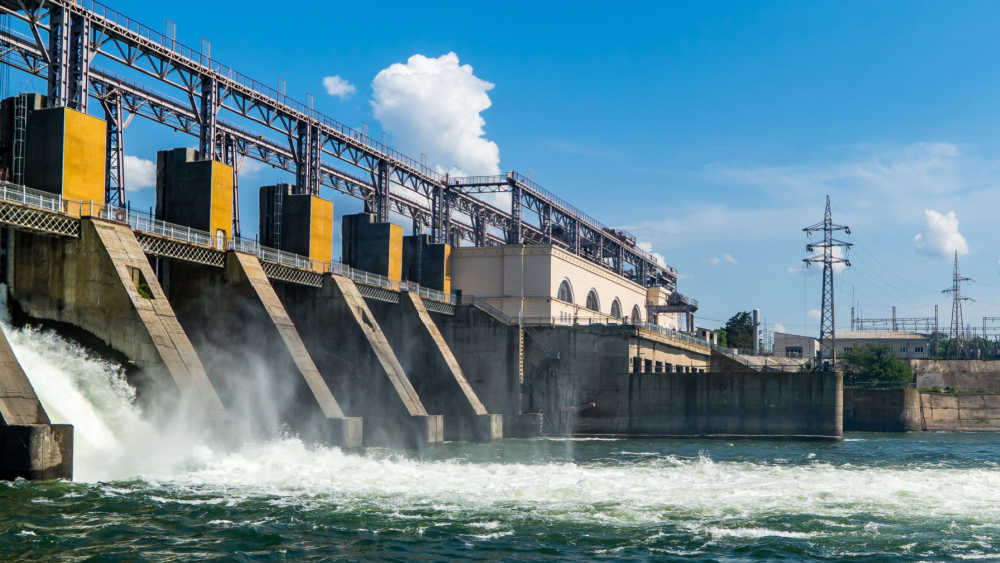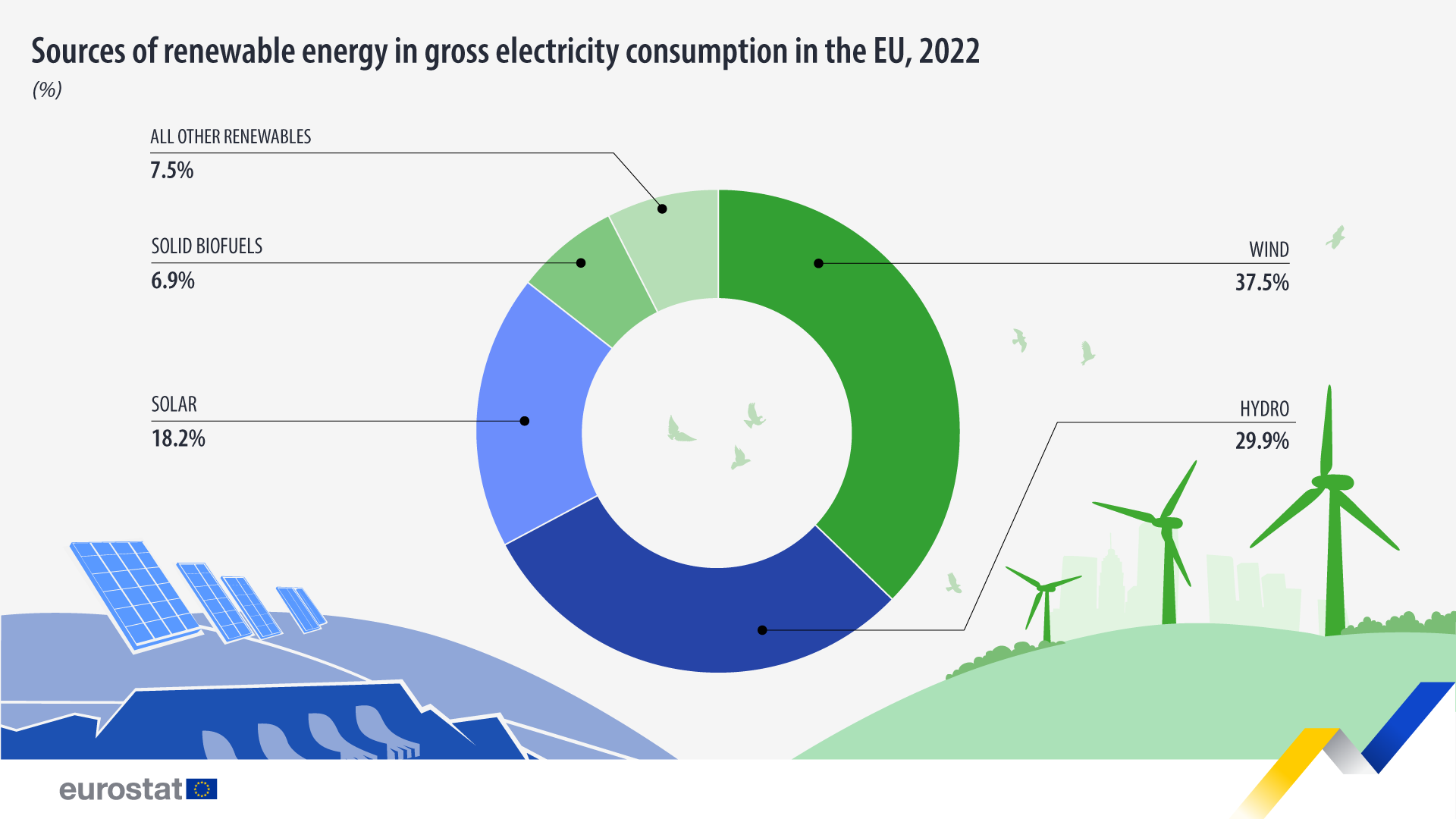Electricity from renewable sources up to 41% in 2022

In 2022, renewable energy sources made up 41.2% of gross electricity consumption in the EU, 3.4 percentage points (pp) more than in 2021 (37.8%) and well ahead of other electricity-generation sources such as nuclear (less than 22%), gas (less than 20%) or coal (less than 17%).
In total, renewable energy sources increased by 5.7% from 2021 to 2022.
Wind and hydropower accounted for over two-thirds of the total electricity generated from renewable sources (37.5% and 29.9%, respectively). The remaining one-third of electricity came from solar (18.2%), solid biofuels (6.9%) and other renewable sources (7.5%). Solar power is the fastest-growing source: in 2008 it only accounted for 1% of the electricity consumed in the EU.
Source dataset: nrg_ind_ured
Electricity from renewables dominates in Sweden
The majority of Sweden's electricity consumption in 2022 came from renewable sources (83.3%, mostly hydro and wind) followed by Denmark (77.2%, mostly wind) and Austria (74.7%, mostly hydro). Shares above 50% were also registered in Portugal (61.0%), Croatia (55.5%), Latvia (53.3%) and Spain (50.9%).
Source dataset: nrg_ind_ren
At the other end of the scale, the lowest shares of electricity from renewable sources were reported in Malta (10.1%), Hungary (15.3%), Czechia (15.5%) and Luxembourg (15.9%).
For more information
Methodological notes
- Hydro is normalised (averaged over a number of years to smooth out the effects of climatic variation) and excludes pumping. Wind is normalised (and from 2021 onwards separately for on-shore and off-shore). Solar includes solar photovoltaics and solar thermal electricity generation. All other renewables include electricity generation from gaseous and liquid biofuels, renewable municipal waste, geothermal, and tide, wave & ocean.
- The percentage of electricity produced from nuclear, gas and coal has been extracted from Eurostat’s energy balances (source dataset: nrg_bal_c), calculated according to the Regulation on energy statistics. However, the indicator on the share of electricity from renewable sources presented in this article has been calculated according to the methodology of the Renewable Energy Directive. Therefore, there are certain methodological differences between both calculations, such as the normalisation of hydro and wind power to remove seasonal effects or the sustainability of solid, liquid and gaseous biofuels. More details on these differences can be found in the Energy balance guide and the SHARES Manual.
- Results exceeding 100% are possible because of how the calculation is defined. In this calculation, the numerator represents the gross electricity production from renewable sources, while the denominator accounts for the gross electricity production from all sources plus imports minus exports. So, if a country generates more electricity from renewables than it consumes in total, the share can surpass 100% (e.g. Norway)
If you have any queries, please visit our contact us page.


